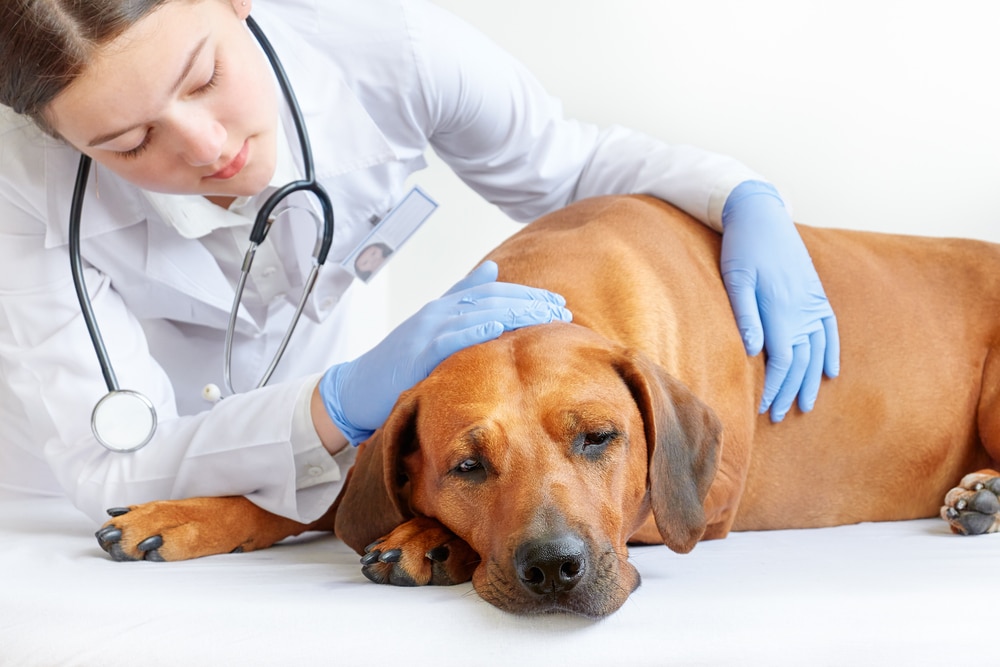During the holiday season, it’s common knowledge that humans sometimes catch illnesses as they gather in large groups to celebrate. This year, canines are facing the same issue. As humans — and their pups — meet up with their family and friends, there is cause for concern that dogs are spreading a recently identified respiratory illness.
The respiratory illness, referred to as atypical canine respiratory illness, was first identified in the western United States during the summer and has spread to as many as 14 states by the end of November. The illness includes several symptoms, such as coughing and sneezing, difficulty breathing, rapid breathing, and wheezing or nasal whistling.
Veterinarians have been key to identifying and managing the outbreak, and their findings have been reported to veterinary schools and professional organizations that are then sharing the information throughout the industry.
As a veterinarian, here’s what you should be aware of regarding this illness, how to treat your patients, and how to inform their owners.
What is the canine respiratory virus?
According to the University of Florida College of Veterinary Medicine, atypical canine respiratory illness is an acute respiratory infection that ranges from a mild infection to a life-threatening diagnosis accompanied by pneumonia. Veterinarians have identified these common symptoms:
- Breathing issues — difficulty breathing, rapid breathing, coughing and sneezing, and wheezing or nasal whistling
- Fever
- Dehydration
- Nasal or eye discharge
- Decrease in activity — lethargy or difficulty exercising
- Nutrition issues — loss of appetite or weight loss
It is highly contagious and rapidly spreads when dogs come into close contact with other dogs. Their dogs should refrain from sharing dog bowls, toys, or chews.
The respiratory illness is diagnosed by identifying symptoms and through testing. If infected, dogs are prescribed cough suppressants for mild cases. Dogs with more severe cases may be hospitalized due to dehydration and treated with nebulization, IV antibiotics, or ventilatory support.
How can veterinarians manage the canine respiratory virus outbreak?
Veterinarians should be on the alert for any patients exhibiting the above symptoms that can appear differently depending on the patient. Some may have a mild to moderate cough that persists for six to eight weeks or more that doesn’t lessen with antibiotic treatment. Others can suffer from chronic pneumonia that has no response to antibiotics. Severe cases may present as severe pneumonia that worsens between 24 to 36 hours.
Diagnostic testing and tools are available for atypical canine respiratory illness, such as those offered by the Purdue University College of Veterinary Medicine, which include a Canine Respiratory PCR Panel and analysis of several types of samples.

What preventative measures are recommended for veterinary clinics?
It’s important for veterinarians to take preventative measures at their clinics. Make sure that patients are current on all vaccinations and recommend vaccination against canine influenza virus for dogs that are expected to be in custody for long periods of time.
Keep your clinic clean by sanitizing exam rooms and areas frequented by dogs and typically contaminated surfaces on doorknobs, phones, waiting areas, and office areas.
How should veterinarians inform their clients?
Communicating to clients about atypical canine respiratory illness is a proactive measure that can help inform pet owners about the illness and prevent its spread.
Use a vet practice management software to email and text clients about the respiratory illness and let them know how your practice is taking preventative measures. Set up automated confirmations and reminders to those who have upcoming appointments that they should let you know about any associated symptoms. Track symptoms and diagnosis by keeping detailed notes in patient records and through forms, check-in and check-out procedures, and requests for information via follow up messages.
As news of the respiratory illness changes across the country and in your area, keep your clients up to date by sending emails and texts with the latest information. And share guidelines on the preventative measures owners can take at home. With the busy holiday season in swing, you may want to send a message in early December to remind travelers about contagious situations at boarding kennels and among gatherings where other attendees may be bringing dogs and contribute to the spread of the illness.
Next steps
There is still a lot to learn about the atypical canine respiratory illness, but you and your patients can take the necessary steps to limit infection and provide immediate care for dogs. Share the newest information and remind your patients about the illness with frequent communication. Keep track of what you’re observing in your patient records. And keep on top of symptoms, spread, and treatment information by checking the news and reading blogs from industry publications.

